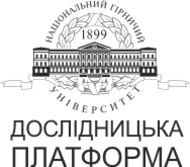№80-25
Improvement of the methodology for forecasting unfavorable meteorological conditions for the dispersion of pollutants in the air
Yu. Buchavyi1, P. Lomazov1
1Dnipro University of Technology, Dnipro, Ukraine
Coll.res.pap.nat.min.univ. 2025, 80:262–274
Full text (PDF)
https://doi.org/10.33271/crpnmu/80.262
ABSTRACT
Goal. To improve the methodology for predicting unfavorable meteorological conditions for the dispersion of pollutants based on the calculation of atmospheric stratification parameters according to synoptic forecasts.
Methodology. The study is based on the methods of mathematical modeling of atmospheric diffusion processes, analysis of empirical data and results of meteorological observations. Methods for determining the stability class of the surface atmospheric layer, calculating the coefficient of vertical turbulent exchange of impurities in it, and assessing the impact of weather conditions on the spread of pollutants were used. In addition, statistical data processing methods were used to improve the accuracy of atmospheric diffusion models.
Research results. An improved algorithm for calculating the vertical turbulent diffusion of pollutants in the atmosphere based on meteorological data is proposed. The algorithm takes into account wind parameters, temperature gradients, atmospheric stratification, and cloud cover. The developed approach allows to improve the accuracy of forecasts of pollutant concentrations in the urban environment, as well as to predict unfavorable weather conditions for dispersion.
Scientific novelty. The dependence between wind speed, cloud cover, the height of the Sun above the horizon and the vertical diffusion coefficient was revealed, which allows predicting unfavorable meteorological conditions for the dispersion of pollutants in the atmosphere. An improved algorithm for calculating the vertical turbulent diffusion of pollutants in the atmosphere is substantiated, which considers meteorological parameters and allows to improve the accuracy of modeling the processes of impurity distribution in the surface air layer.
Practical significance. Forecasting adverse meteorological conditions for a period of up to 3–7 days will allow industrial enterprises to adjust the intensity of pollutant emissions in advance, which will help reduce their impact on public health. The proposed approach can be used in environmental monitoring systems, in the development of pollution reduction strategies, and in research on modeling atmospheric processes. Considering meteorological factors in air pollution forecasting will contribute to more effective planning of measures to reduce harmful emissions and protect public health.
Keywords: atmospheric diffusion models, sources of air pollution, industrial emissions, atmospheric stratification.
References
1. U.S. Environmental Protection Agency. (n.d.). Air quality dispersion modeling – Preferred and recommended models. https://www.epa.gov/scram/air-quality-dispersion-modeling-preferred-and-recommended-models#aermod
2. U.S. Environmental Protection Agency. (n.d.). User's guide for the industrial source complex (ISC3) dispersion models, volume 2: Description of model algorithms. https://nepis.epa.gov
3. CALPUFF Modeling System. (n.d.). https://calpuff.org
4. International Atomic Energy Agency. (1987). Techniques and decision making in the assessment of off-site consequences of an accident in a nuclear facility (Safety Series No. 86). International Atomic Energy Agency.
5. Derzhhidromet Ukrainy. (2010). Metodychni vkazivky shchodo prohnozuvannia meteorolohichnykh umov formuvannia rivniv zabrudnennia povitria v mistakh Ukrainy (KD 52.9.4.01-09). Nakaz №77 vid 14.12.2010.
6. Hlushkov, O. V., ta in. (2014). Analiz ta prohnozuvannia ekolohichnoho stanu povitrianoho baseinu promyslovykh mist z urakhuvanniam meteorolohichnykh ta antropohennykh faktoriv: Novi matematychni modeli ta novitni eksperymentalni tekhnolohii. Odeskyi derzhavnyi ekolohichnyi universytet.
7. Poletaieva, L. N. (2016). Prohnoz meteorolohichnykh umov zabrudnennia povitrianoho baseinu Kyieva. Visnyk KhNU imeni V. N. Karazina. Seriia: Ekolohiia, 14, 1–10.
8. Davydova, O. Yu., Pysarevskyi, I. M., & Ladyzhenska, R. S. (2012). Upravlinnia yakistiu produktsii ta posluh u hotelno-restorannomu hospodarstvi: navch. posibnyk. KhNAMH.
9. Turner, B. (1961). Relationship between 24-hour mean air quality measurements and meteorological factors in Nashville, Tennessee. Journal of the Air Pollution Control Association, 11, 483–489.
10. Pasquill, F. (1962). Atmospheric diffusion. Van Nostrand Co. Ltd.
11. Pasquill, F. (1976). Atmospheric dispersion parameters in Gaussian plume modeling: Part II. Possible requirements for change in the Turner workbook values (EPA-600/4-76-030b). U.S. Environmental Protection Agency.
12. Duffett-Smith, P. (1995). Practical astronomy with your calculator (3rd ed.). Cambridge University Press.
13. Meteoblue. (2024). Arkhiv pohody Dnipro. https://www.meteoblue.com/uk/weather/historyclimate/weatherarchive/dnipro_ukraine_709930?fcstlength=1m&year=2024&month=3
14. Meteopost. (n.d.). METEOFOR_Pohoda v aeroportu Dnipro sohodni, prohnoz pohody aeroport Dnipro na sohodni. https://meteofor.com.ua/weather-dnipro-14408




